The kimono tells a story of Japanese cultural heritage through its beautifully designed fabrics. For centuries, women have used kimonos to connect with traditions from important events to casual summer festivals. More than just clothing, the kimono inspires self-expression of one’s identity and values. Its patterns communicate history, nature, and the wearer’s societal place.
As cross-cultural exchange spreads global appreciation for its artistry, the kimono continues bridging traditions with today’s self-confident women. The vibrant kimono remains relevant for Japanese women today, from elegantly formal wear to festive summer yukata.
Cultural traditions and heritage
Expressing one’s cultural roots through a kimono is about more than wearing a garment – it’s a celebration of Japanese heritage. As the quintessential Japanese dress, kimono has evolved over centuries to become deeply ingrained in society. Choosing a design reflects a woman’s personal connection to her upbringing.
Several facts make the kimono an iconic symbol of culture:
| Aspect | Detail |
|---|---|
| History | Kimono design continually reflected changing social norms to remain relevant through time. |
| Craftsmanship | Intricate embroidery, dyeing, and techniques elevate kimono as wearable art, passing skills across generations. |
| Symbolic meaning | Patterns represent significant facets of culture like age, marital status, and virtues like harmony. |
By donning a beautiful kimono, you express appreciation for the artistry, values, and evolving identity of Japanese society through generations. The garment connects you to family history in a tangible way.
Whether hiking in Yukata or relaxing in casual wear, kimono is a fashionable means to honor one’s cultural heritage.
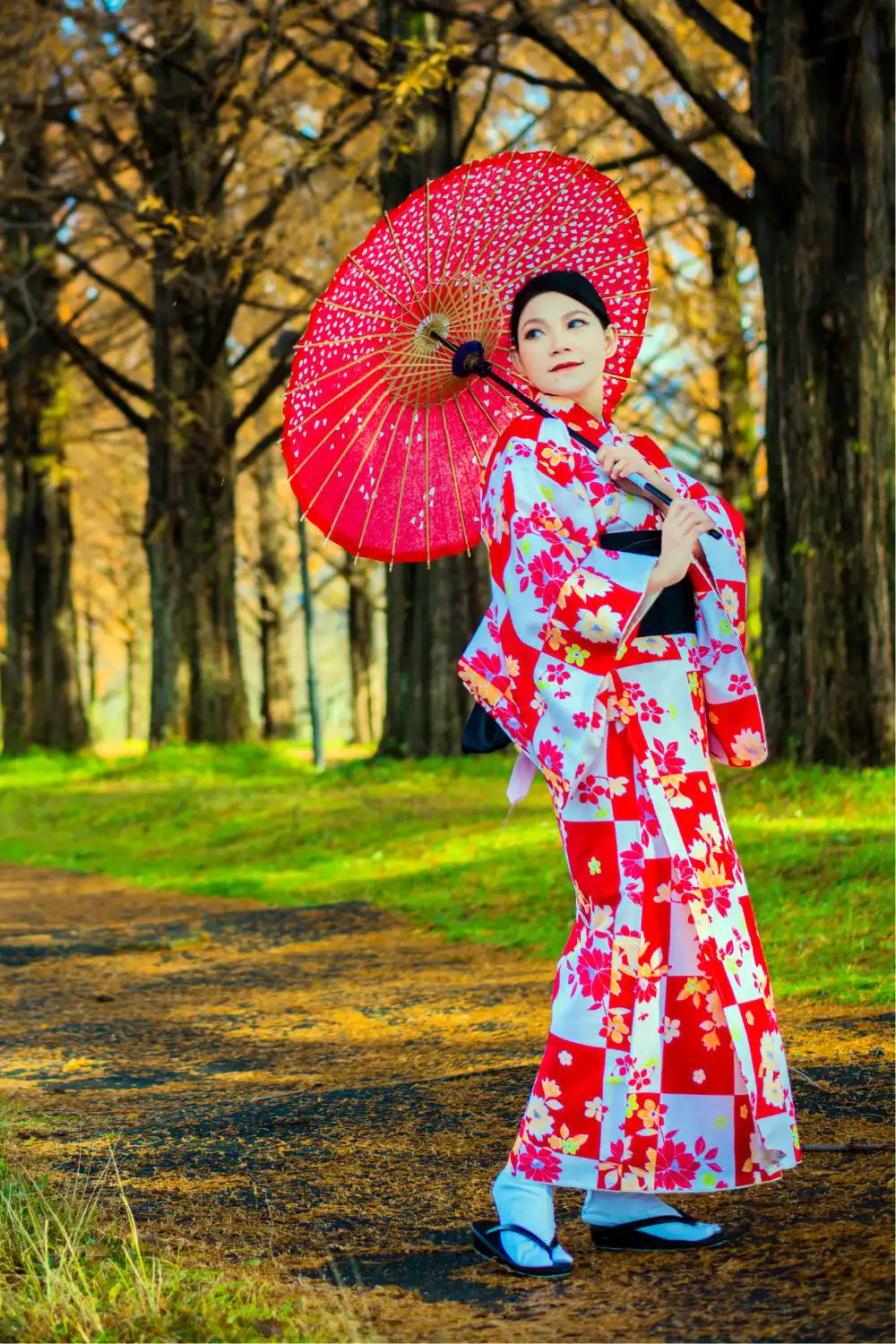
Special occasions
Special occasions like weddings and funerals take on a deeper meaning when partaking in respected traditions. Certain kimono types carry distinct symbolic meanings showing respect:
- Brides traditionally wear pure white shiromuku, symbolizing new beginnings
- Black kurotomesode worn by married women signifies maturity and experience
- Intricate kimono designs create a visually impressive atmosphere
By following etiquette in a ceremonial kimono, you demonstrate consideration for others. Friends and family feel your support and shared cultural identity.
The flowing silhouettes give elegance to memories, while vibrant hues uplift somber moments. Honoring traditions through respectful dress ensures meaningful remembrance for all.
Tea ceremonies
Participating in the tea ceremony presents a chance to experience tranquility through tradition. Donning simple kimono complements the minimalist aesthetic, with muted colors blending seamlessly.
The intentional and reflective nature of the tea ritual calls for clothing that enhances one’s sense of cultural immersion.
By wearing a kimono, you show reverence for tea ceremony customs and the host. Its loose yet graceful design allows full participation in kneeled postures.
Your outfit transports you into a meditative cultural experience that has endured for centuries. In the Japanese art of tea, the kimono ties guests to rituals sustaining a shared appreciation of nature’s harmony.

Summer festivals
Festivals brighten the season with hometown gatherings and dancing in the streets. Lightweight yukata lets you fully embrace the lively atmosphere. These casual kimono prioritize both aesthetics and comfort with breathable fabrics.
Yukata designs lift your mood through vivid colors and patterns:
| Color/Pattern | Signficance |
|---|---|
| Floral | Represent rebirth and natural beauty |
| Birds | Symbolize freedom and liveliness |
| Dragons | Portray strength and majesty |
You can find your favorite style to express individual tastes. Traditional bonding through dances and snacks becomes even more enjoyable, dressed for summer fun.
Whether chasing tanabata wishes or trying goldfish, donning yukata ensures you blend into the joyous communal spirit. The vibrant ensembles spread good cheer wherever festivities unite neighbors, young and old.
Fashion statement and personal style
Beyond ceremony, the kimono inspires self-confidence on any occasion through dynamic designs. Contemporary silhouettes marry tradition with cosmopolitan flair, gaining acclaim on international runways. Color palettes showcase artistic passion alongside craftsmanship and meticulousness.
Wearing a kimono makes a statement that you appreciate Japanese cultural heritage through modern interpretation. Of course, comfort remains a top priority – layering regulates temperature in any climate. Staples like indigo keep casual outfits stylish effortlessly.
You put an elegant spin on daily errands by incorporating a kimono into your off-duty wardrobe with accessorizing flair. Turn heads as you showcase individual flair with this ever-adaptable piece of vintage Victoriana that never goes out of fashion.
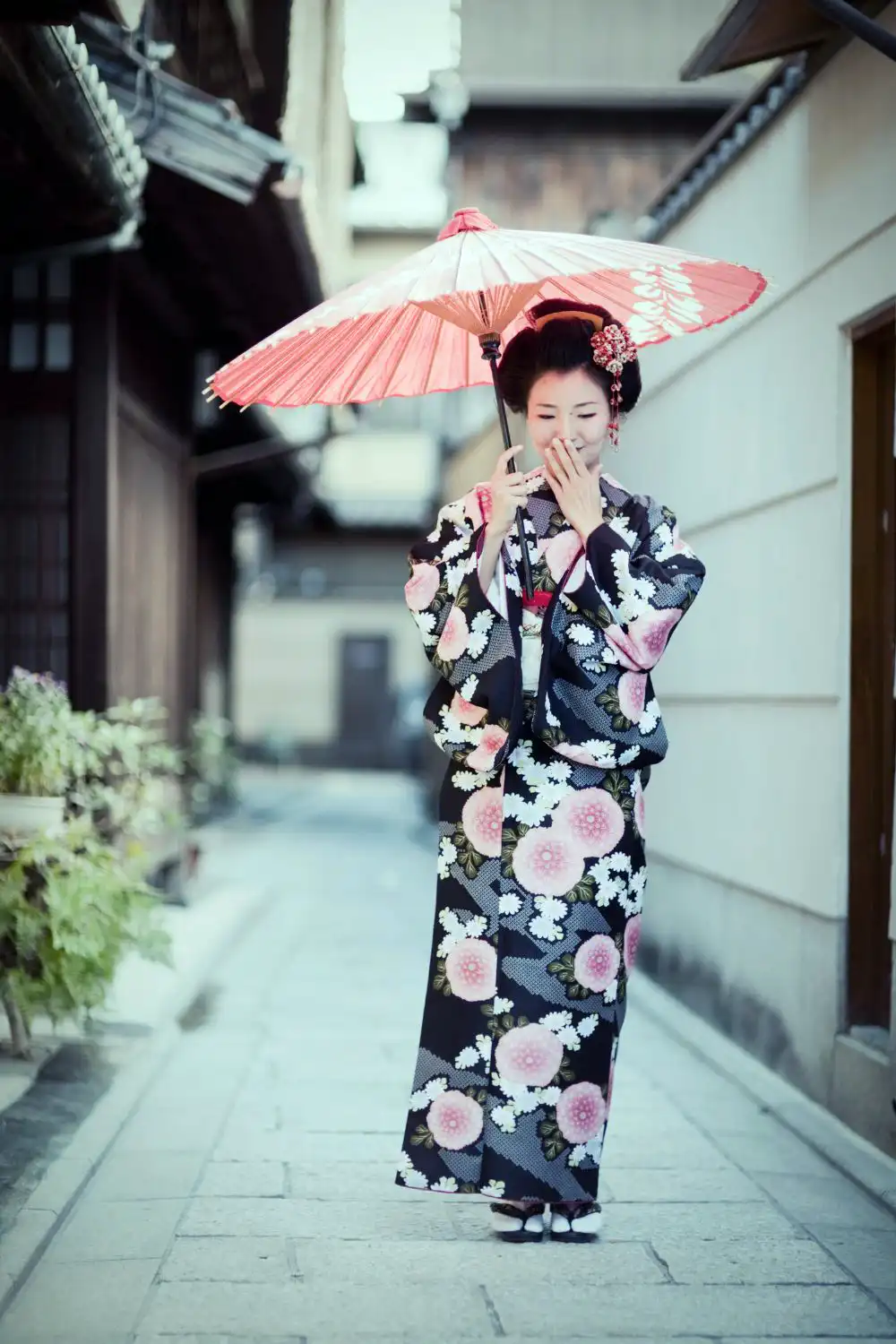
Artistic expression
Beyond their elegant aesthetics, kimono stir the soul as living works of art. Generations of artisans imbued visual storytelling into fabric through natural dyeing, embroidery, and symbolic motifs.
Specific patterns carry deep cultural significance:
- Cranes represent longevity
- Waves signify grace and fluidity
- Cherry blossoms portray fleeting beauty
By donning a kimono, your appearance narrates aspects of nature, history, or personal taste. Movement accentuates dramatic shapes into dynamic living galleries.
International exhibits share kimono artistry and spread visual cultural appreciation globally. You participate in a tactile dialogue bridging tradition and modernity through lavish yet understated self-adornment.
Formality, respect, and reverence
In certain contexts, wearing a kimono signifies reverence through sophisticated dignity. Certain types represent maturity and prestige when meeting elders or attending rituals.
Black kurotomesode kimono worn by married women:
- Convey a sense of experience and wisdom
- Denote their role as pillars of the community
By wearing kimono for important cultural situations, you demonstrate:
| Significance | Example |
|---|---|
| Respect | Visiting grandparents or attending tea ceremonies |
| Prestige | Participating in coming-of-age ceremonies |
| Heritage | Honoring lost loved ones at memorial services |
Even abroad, the kimono maintains composure on any formal occasion through seasoned poise. Their flowing shapes encourage graceful manners, befitting respect wherever tradition matters most.
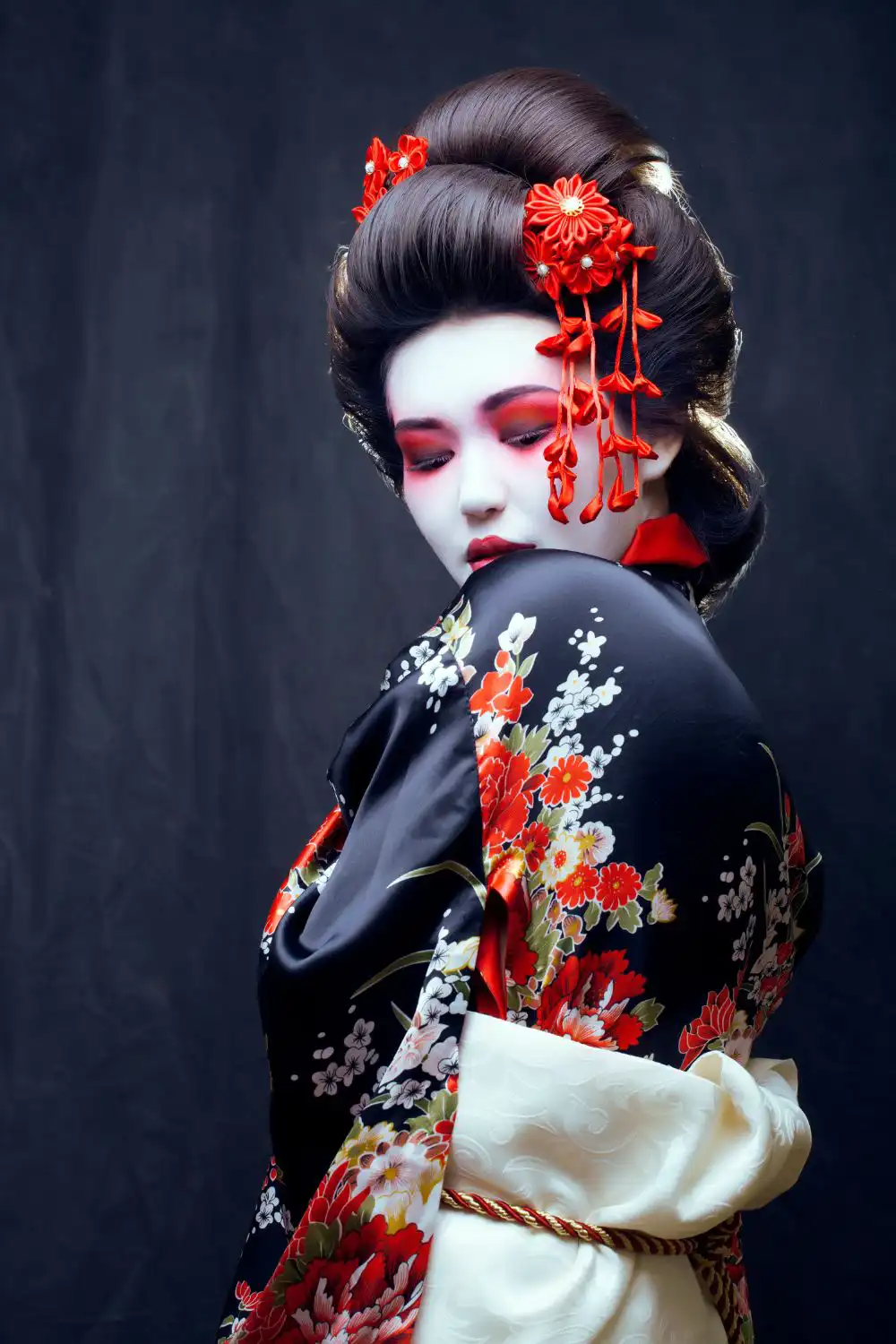
Comfort and practicality
Despite spectacular hues, kimonos prioritize ease through innovative conveniences without losing heritage. Lightweight silks and layered kimono sets regulate temperature through any season.
Obi sashes:
- Cinch tightly for work
- Tie loosely for warm-weather comfort
Contemporary fabrics integrate stretch for active lifestyles. Adjustable designs complement diverse figures effortlessly. Whether dashing to meetings or play dates with kids, kimono moves with you in chic simplicity.
Aesthetic beauty
For centuries, kimonos enthralled the world with splendor as artworks you live in. Vibrant hues emerge from meticulous techniques like natural indigo dyeing into dramatic shapes. Eras showcase craftsmanship through designs:
- Heian period Yamato-e featured floral brushwork.
- Edo-period ikat weaving created optical color blends
Their fluid forms grace, all gracing them with timeless poise. Global exposure spread appreciation for Japanese textile art’s magnificence through interactive displays and collaborative fashion. Beauty inspires endless innovation, from silk to surfwear.
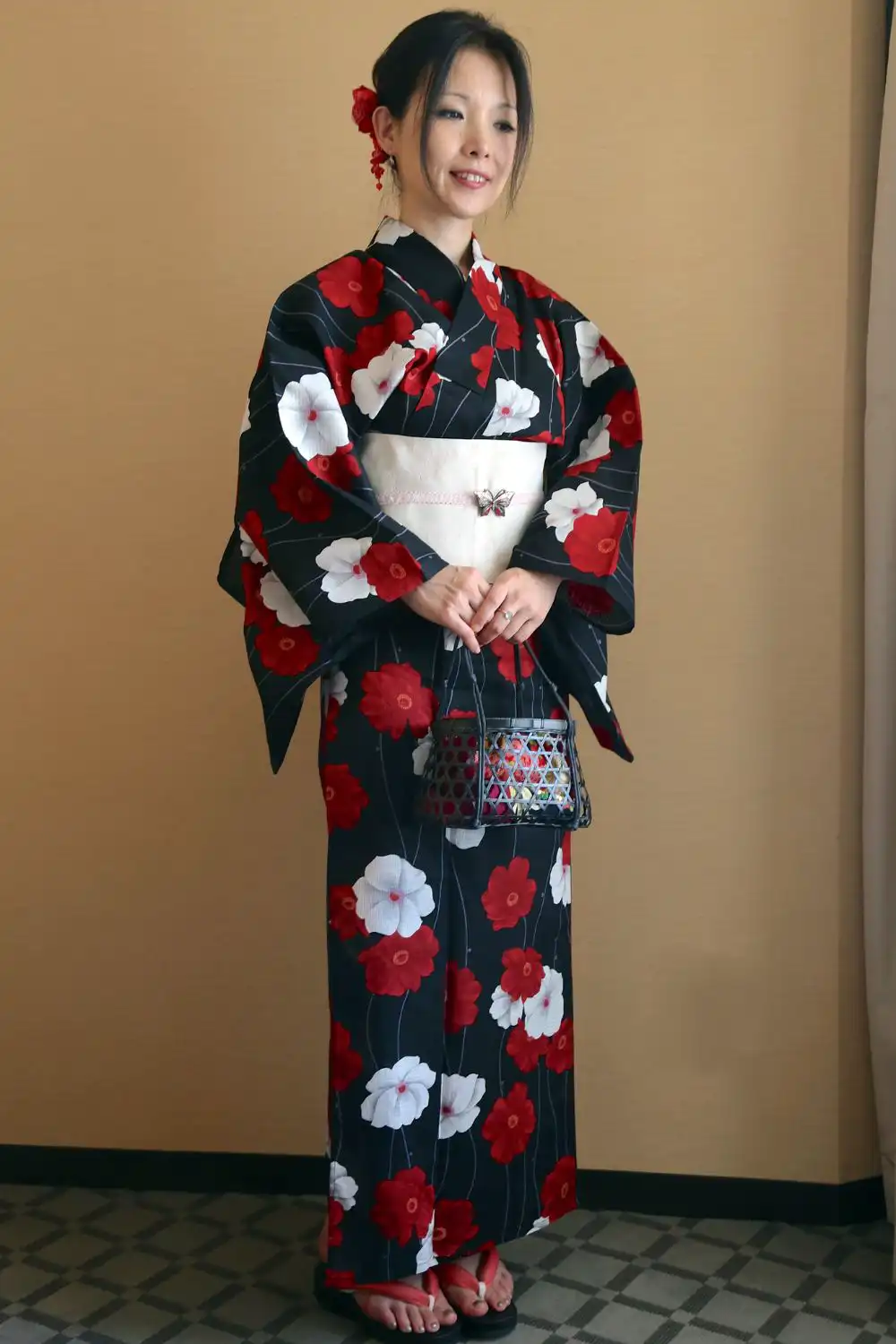
Cultural expression and identity
Through versatile designs, kimono becomes a vibrant canvas for crafting your unique story. Delicate embroidery, dyes, and woven patterns all carry symbolic meanings representing:
| Motif | Significance |
|---|---|
| Cranes | Longevity, wisdom |
| Cherry blossoms | Ephemeral beauty |
| Chrysanthemums | Royalty, perseverance |
You proudly share your culture by selecting fabrics reflecting your heritage and values. Diverse lineages find appreciation through inclusive dialogue. Cross-cultural discussions spark new understanding and perspectives.
Seasonal kimonos synchronize harmony with nature’s flow. Stylistic flair complements keen self-awareness and confidence within the community. In this tactile narrative, tradition progresses through dynamic identities beautifully expressed.
Preservation of cultural heritage
Donning and supporting artisans sustains dynamic craft traditions vital to identity. Generations gained expertise and aesthetic adaptations through kimono.
Wearing kimono:
- Spreads motifs’ symbolic meanings
- Ensures ceremonies stay living practices
- Maintains livelihoods for traditional industries
Sharing with ancestors connects you across eras. Passing a kimono to offspring roots future lives in cultural respect. Digital archives make intangible techniques accessible globally. Living heritage fosters diversity while uniting shared values of beauty, hard work, and community.

Global appreciation
International acclaim recognizes kimono excellence as a global cultural achievement. Exhibitions sharing techniques worldwide inspire many to experience:
- Graceful silhouettes
- Vivid colors
- Artisanal proficiency
International influences expand while respecting origins. Collaborations spread influence through diverse interpretations. Cultural exchange enlightens communities worldwide with gratitude for our shared bonds. Together, we sustain treasures from all lands for generations yet distant.
Historical and cultural significance
For centuries, kimono portrayed moments in Japan’s story. Eras show artistic and social evolution through clothing:
- The Heian period (794-1185 AD) introduced sophisticated, graceful styles.
- Edo period (1603-1868) brought elaborate textiles complementing peaceful prospering culture.
Archives preserve invaluable heritage lessons for all. Motifs like cranes symbolizing imperial authority since the Nara period (710-794) underline the kimono’s role in shared culture across Asia.
Learning kimono’s illustrious past, you discover aspects of yourself and your community’s roots. Respecting where we come from nurtures a well-rounded understanding and empathy. Traditional crafts empower appreciation for history living through dynamic expression.
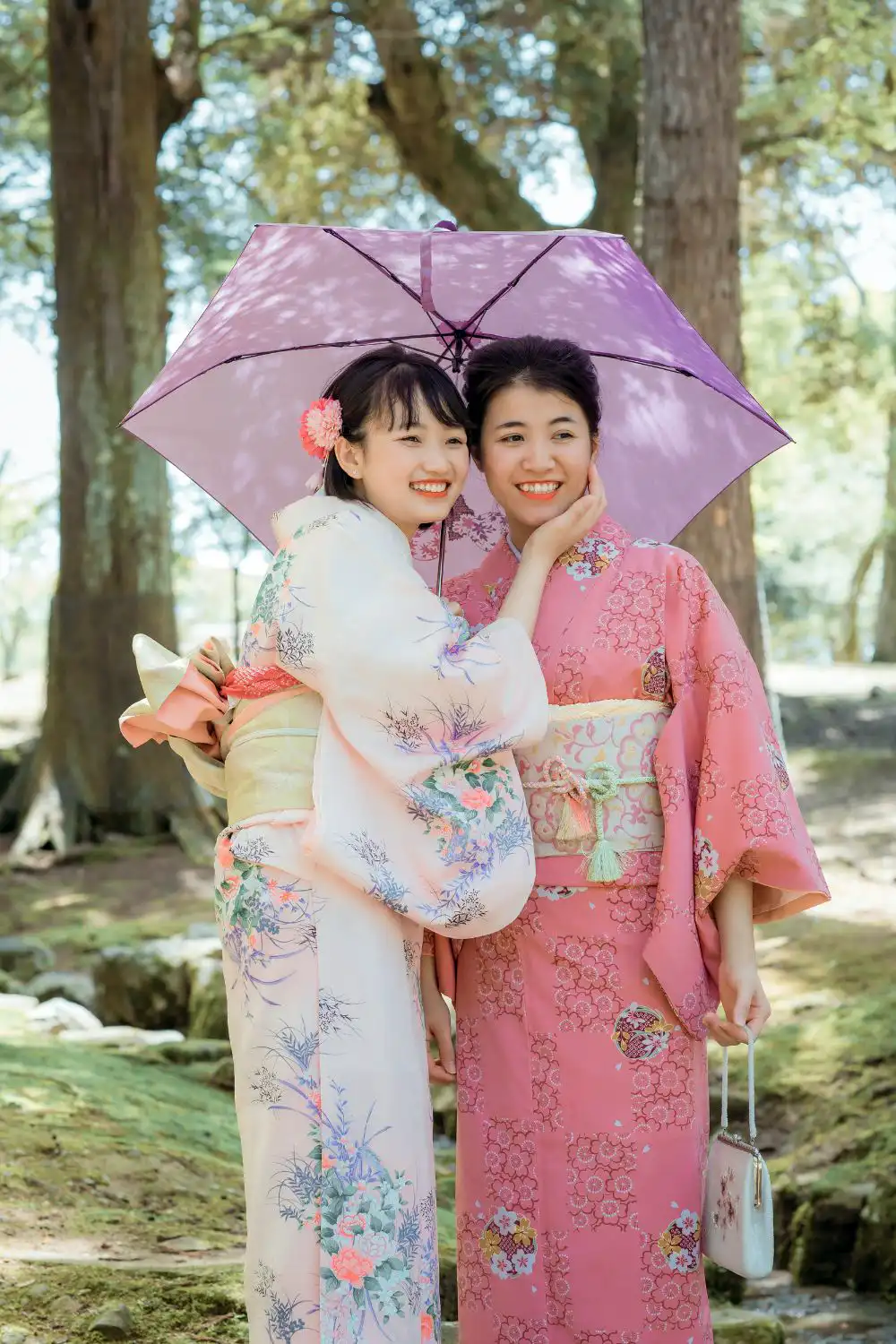
Symbol of femininity
Graceful flowing silhouettes flatter figures naturally, accentuating health and poise. Delicate, colorful fabrics complement all shapes beautifully.
Floral and nature patterns represented since Heian court lady fashions spread positive feminine energy. Compositions balance structure with softness through fabrics draped artfully.
Self-adornment through kimono embraces one’s bloom into lively purpose and compassion. Heritage encourages empowerment through dignified self-love with heritage. Confidence arises from within, magnified yet not defined by outward presentation.
Traditional Japanese culture
Throughout history, kimonos played pivotal roles in cultural and religious ceremonies marking life passages. Specific fabrics carry deep auspicious symbolism during these meaningful traditions.
Participating through respectful clothing teaches history and spiritual philosophies of gratitude, humility, and compassion. Festive ensembles spread goodwill within tight-knit neighborhoods historically forming Japan’s heart. Shared rituals unite souls across distances.
Seasonal and religious festivals
Community bonds strengthen through vibrant festivities following nature’s rhythms. Distinctive ensembles mark these joyous calendar events:
- Setsubun in February featured demon-patterned masks
- Hinamatsuri in March sported a vermillion kimono for a doll exhibit.
- Tanabata in July used colorful yukata for star festival dances
Designs synchronize with each occasion’s auspicious elements:
| Festival | Kimono motif |
|---|---|
| Shichi-Go-San | Pine trees for Longevity on young girls’ Modest Kimono |
| O-bon | Lanterns guide ancestral spirits home on kimono annually |
Partaking in festive spirit uplifts souls cooperating with the season’s flow. Symbolism reminds gratitude for blessings like health, harvests, and kinship. Sharing food and prayers transcends backgrounds into shared joy.
Whether shining paper lanterns or waving dancing frogs, tradition connects neighborhoods in goodwill.
Holiday kimono spreads cheerful vibrancy wherever the procession leads. Cultural appreciation arises from participating humbly and openly wherever life’s drama unfolds richly.
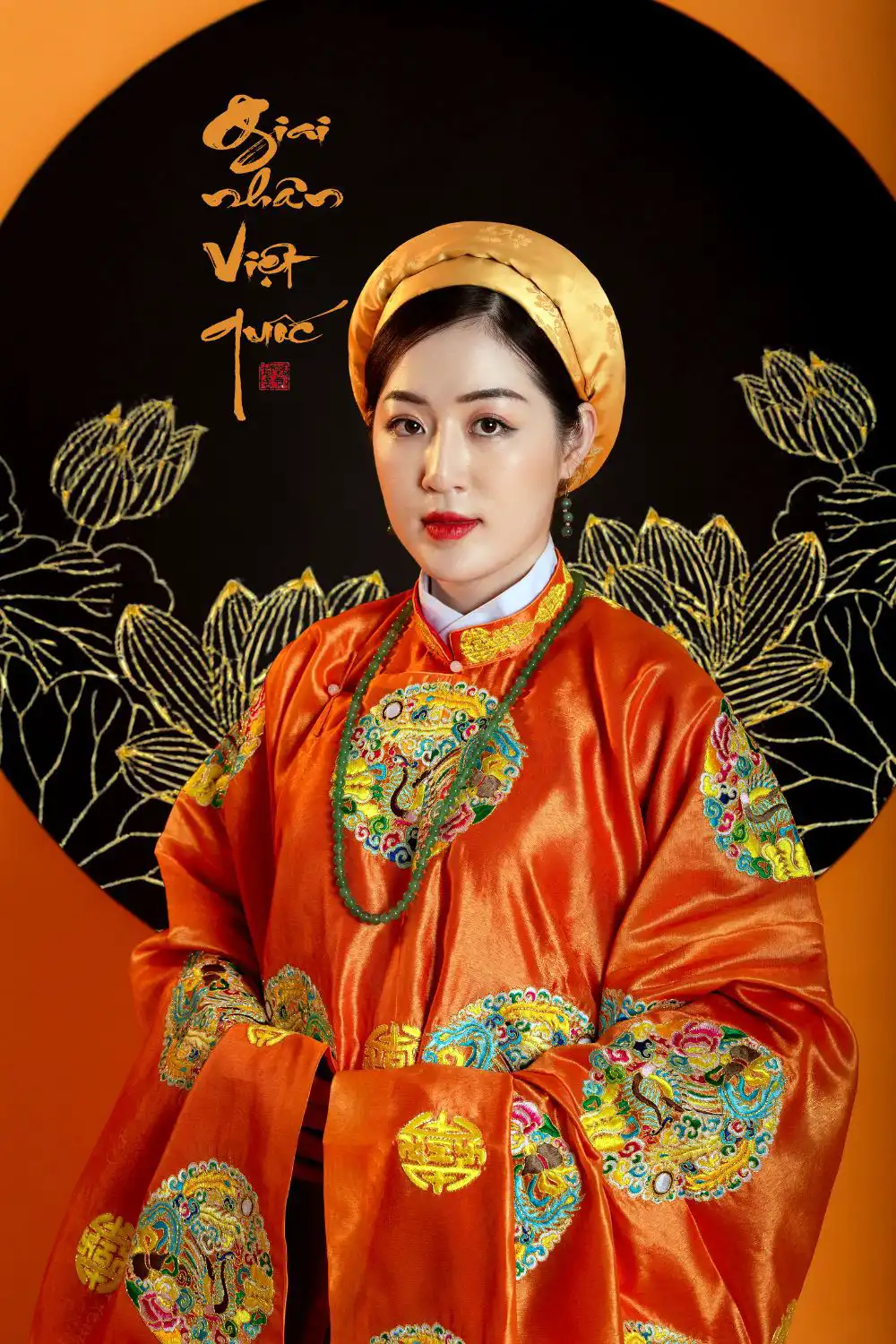
Summary
The kimono tells the story of Japanese culture and connects women to tradition. For centuries, artisans have passed down techniques through fabrics. Patterns show aspects of nature, history, and society.
Women proudly share their culture by choosing kimono designs. Ceremonies and festivals strengthen neighborhoods with meaningful traditions. Rituals teach life lessons and unite communities.
Versatile silhouettes keep traditions relevant in modern times. Global sharing spreads deep understanding and respect across borders. Exhibitions inspire worldwide appreciation for kimono art.
By participating respectfully in everyday ways, women express dynamic identities and ensure heritage thrives. Through the kimono, past and future unite to nurture cultural vibrancy.
FAQ
What is the purpose of wearing a kimono?
Kimono are traditionally worn for formal occasions and special events, such as weddings, tea ceremonies, coming-of-age ceremonies, and funerals. Some people also wear them for everyday activities, especially in rural areas.
Do kimono patterns mean anything?
Yes, kimono patterns often have symbolic meanings. For example, cranes are a symbol of longevity, plum blossoms are a symbol of renewal, and cherry blossoms are a symbol of beauty and transience.
What do black kimonos mean?
Black kimono are typically worn by married women for formal occasions, such as funerals. They are also worn by geisha and maiko, who are traditional Japanese entertainers.
Why are kimonos so expensive?
Kimono can be expensive because they are often hand-sewn from high-quality fabrics. They may also be decorated with embroidery, gold leaf, or other embellishments.
Is it OK to wear a kimono if you’re not Japanese?
Yes, it is perfectly acceptable for non-Japanese people to wear kimono. Kimonos are beautiful and traditional garments, and people worldwide can appreciate their beauty and significance.



